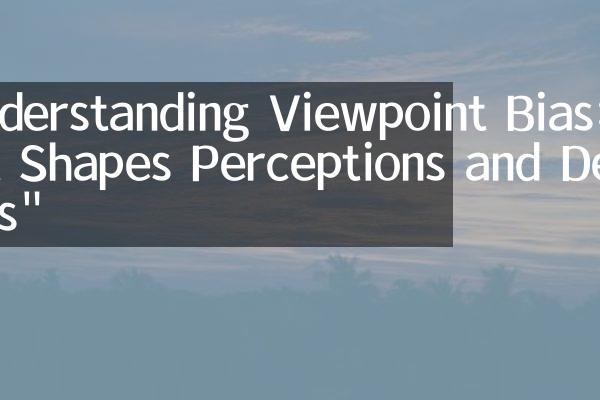Understanding Similarity Attraction Bias: How Shared Interests Shape Our Relationships
#### Similarity Attraction Bias**Similarity attraction bias** refers to the phenomenon where individuals are drawn to others who share similar characteristi……
#### Similarity Attraction Bias
**Similarity attraction bias** refers to the phenomenon where individuals are drawn to others who share similar characteristics, beliefs, interests, and values. This cognitive bias plays a significant role in the formation of friendships, romantic relationships, and even professional partnerships. The underlying premise is that people tend to feel more comfortable and connected with those who mirror their own traits, leading to a natural inclination to seek out and maintain relationships with similar others.
#### The Psychology Behind Similarity Attraction Bias
The roots of **similarity attraction bias** can be traced back to social psychology. Humans are inherently social beings, and our brains are wired to seek connection and belonging. When we encounter someone who shares our interests, it not only validates our own beliefs but also creates a sense of ease in communication. This shared ground often leads to deeper conversations, increased empathy, and a stronger bond.

Research has shown that similarity can manifest in various forms, including demographic factors (such as age, race, and gender), personality traits, values, and even hobbies. For instance, two individuals who enjoy the same music genre or share similar political views are more likely to form a connection than those with starkly different preferences. This is because shared interests provide common ground for interaction, reducing the potential for conflict and misunderstanding.
#### The Impact of Similarity Attraction Bias on Relationships
The influence of **similarity attraction bias** extends beyond casual friendships. In romantic relationships, partners who share similar values and interests often report higher levels of satisfaction and stability. This similarity fosters mutual understanding and reduces the likelihood of disagreements, as both individuals are more likely to approach situations from a similar perspective.
In professional settings, teams composed of members with similar backgrounds or expertise may find it easier to collaborate and communicate effectively. However, this bias can also lead to homogeneity, where diverse perspectives are overlooked. While similarity can enhance cohesion, it is essential to balance it with diversity to foster creativity and innovation.

#### Recognizing and Mitigating Similarity Attraction Bias
While **similarity attraction bias** can enhance relationships, it is crucial to be aware of its potential downsides. By favoring those who are similar to us, we may inadvertently exclude individuals who bring diverse perspectives and experiences. This can limit personal growth and hinder the development of a well-rounded social network.
To mitigate the effects of this bias, individuals can consciously seek out relationships with people from different backgrounds or with differing viewpoints. Engaging in diverse social activities, participating in community events, or joining groups that challenge one’s beliefs can provide opportunities to connect with a wider array of individuals. This not only enriches personal experiences but also fosters empathy and understanding across different cultures and ideologies.
#### Conclusion

In conclusion, **similarity attraction bias** is a powerful force that shapes our relationships and social interactions. While it can lead to fulfilling connections based on shared interests and values, it is essential to remain mindful of its limitations. By embracing diversity and seeking connections outside of our comfort zones, we can cultivate a richer and more inclusive social landscape. Understanding this bias allows us to navigate our relationships more effectively and appreciate the beauty of both similarity and difference in our lives.